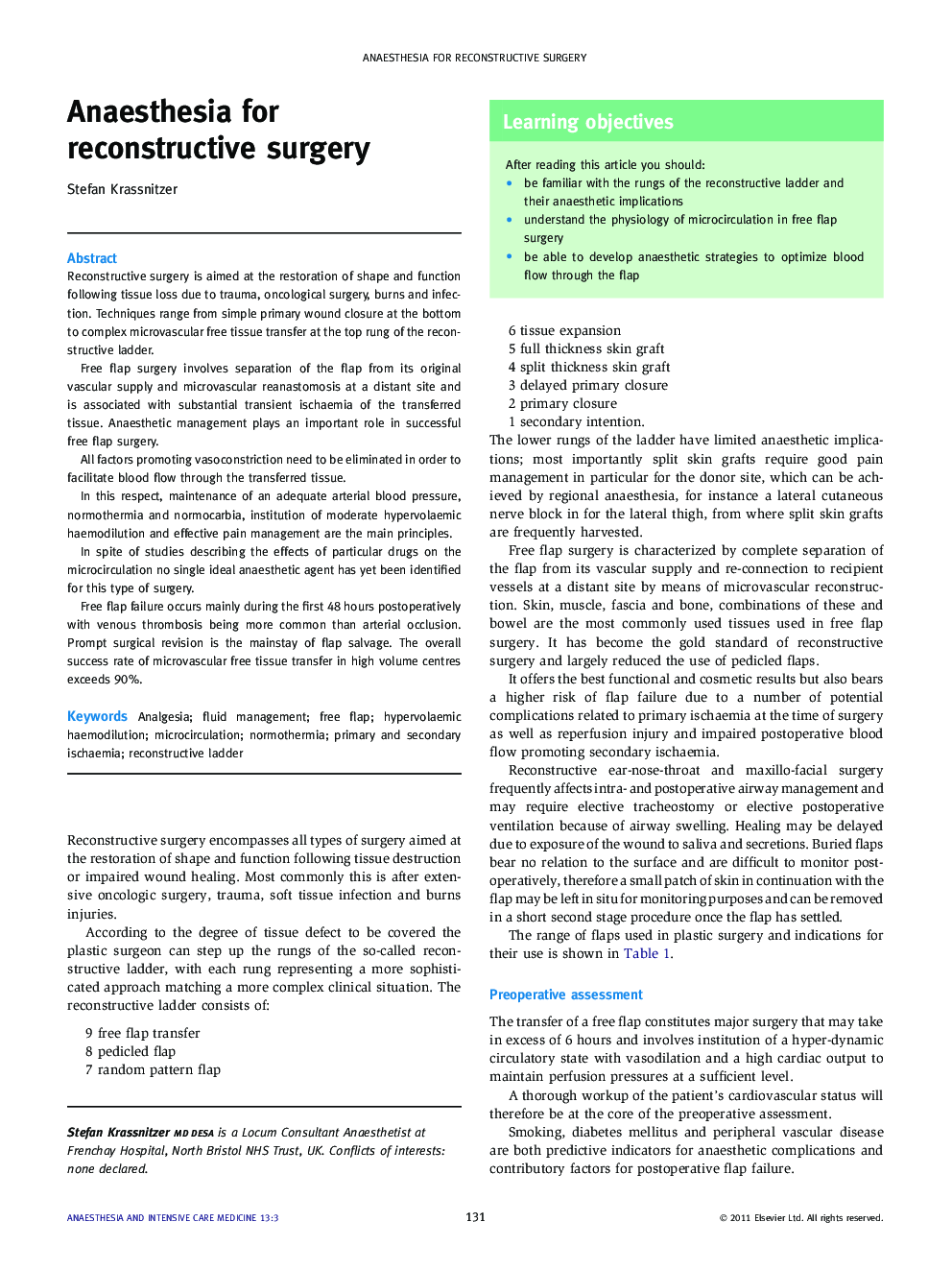| Article ID | Journal | Published Year | Pages | File Type |
|---|---|---|---|---|
| 2742486 | Anaesthesia & Intensive Care Medicine | 2012 | 4 Pages |
Reconstructive surgery is aimed at the restoration of shape and function following tissue loss due to trauma, oncological surgery, burns and infection. Techniques range from simple primary wound closure at the bottom to complex microvascular free tissue transfer at the top rung of the reconstructive ladder.Free flap surgery involves separation of the flap from its original vascular supply and microvascular reanastomosis at a distant site and is associated with substantial transient ischaemia of the transferred tissue. Anaesthetic management plays an important role in successful free flap surgery.All factors promoting vasoconstriction need to be eliminated in order to facilitate blood flow through the transferred tissue.In this respect, maintenance of an adequate arterial blood pressure, normothermia and normocarbia, institution of moderate hypervolaemic haemodilution and effective pain management are the main principles.In spite of studies describing the effects of particular drugs on the microcirculation no single ideal anaesthetic agent has yet been identified for this type of surgery.Free flap failure occurs mainly during the first 48 hours postoperatively with venous thrombosis being more common than arterial occlusion. Prompt surgical revision is the mainstay of flap salvage. The overall success rate of microvascular free tissue transfer in high volume centres exceeds 90%.
